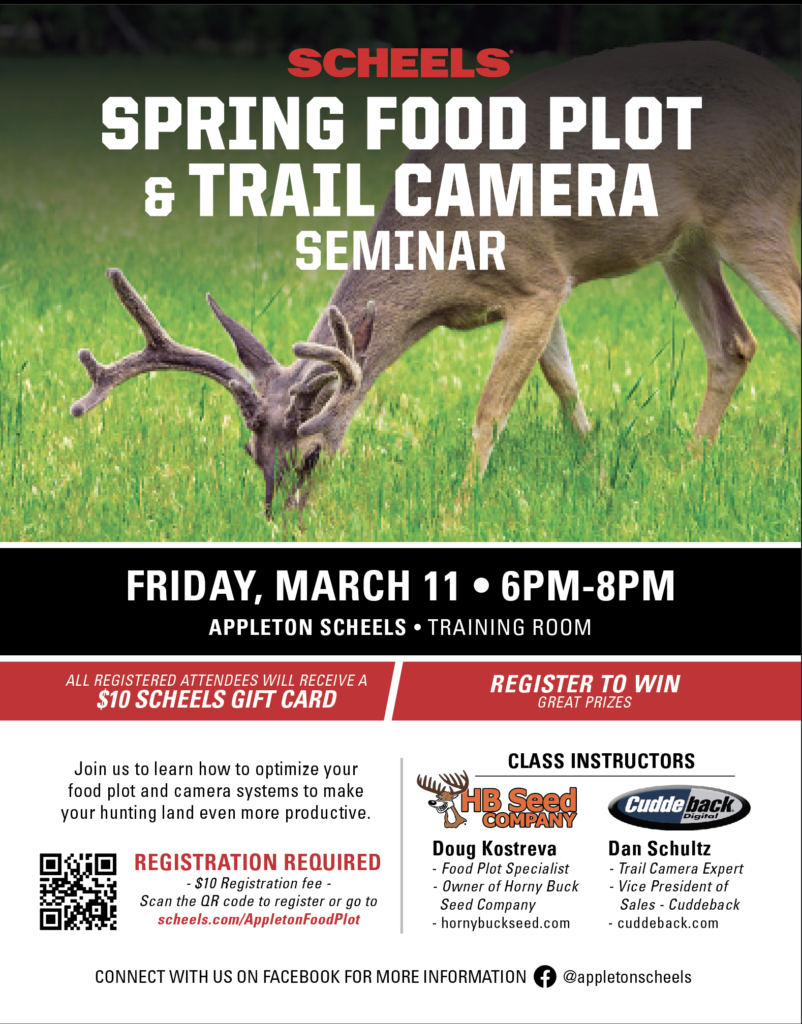
Join us March 11 at the Appleton SCHEELS for a food plot and trail camera seminar from 6 pm – 8 pm.
Registration is $10; each attendee will receive a $10 SCHEELS gift card.
Click here to register.

Join us March 11 at the Appleton SCHEELS for a food plot and trail camera seminar from 6 pm – 8 pm.
Registration is $10; each attendee will receive a $10 SCHEELS gift card.
Click here to register.
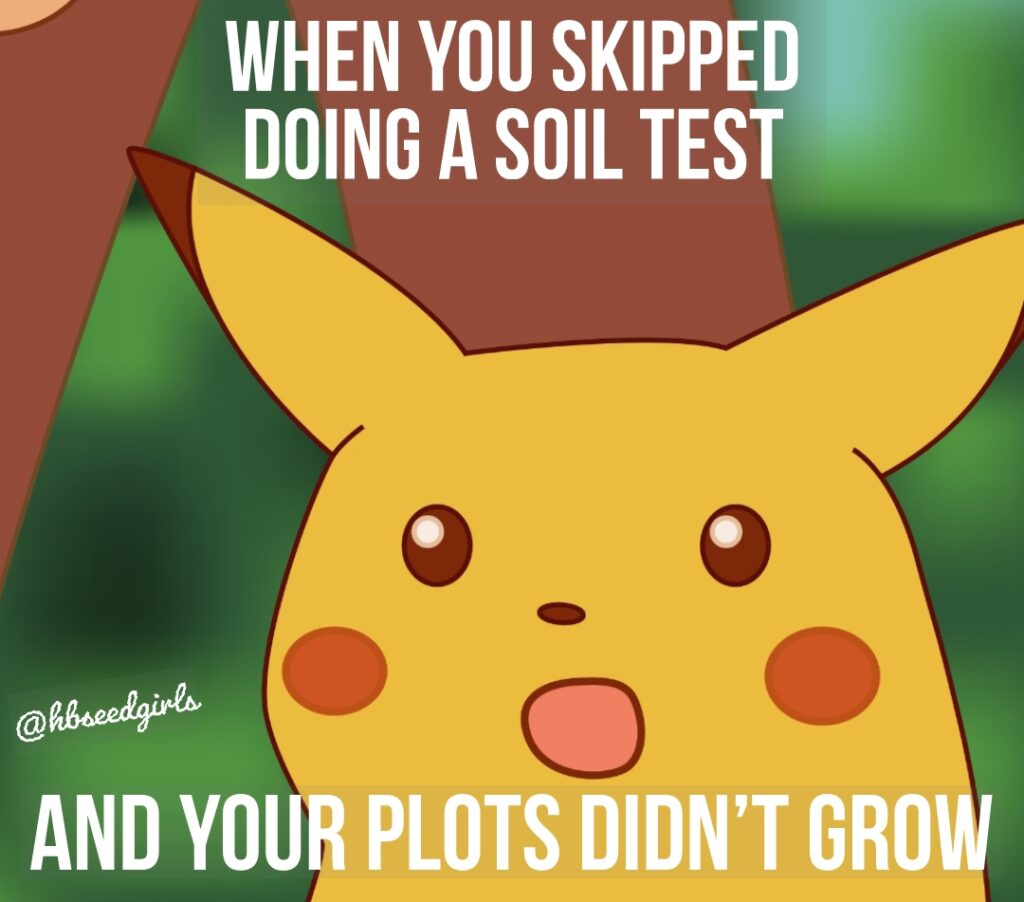
Have you ever asked Doug for advice on what to plant in your plots? I’d bet money I know what the first thing he’d ask you is.
Ummm…
Not sure? Not sure how to find out? Don’t worry, we got you.
Soil tests are so important to the success of your plots. They spell out for you exactly what you need to get the groceries you’re looking for. Even the freshest of seeds won’t grow to it’s full potential if soil conditions aren’t juuuuust right. Instead of guessing what your soil might need, wouldn’t you feel better if you knew EXACTLY what it needed? That’s where soil tests come in. Here we’ll explain everything you need to know and do to collect a soil sample and send it in for analysis.

You’ll only need to take the bucket and the soil probe/shovel when you head out to your food plot site. We suggest you take a minimum of five samples from each food plot site: one from each corner and one from the center. You will put all five of these samples into the same bucket, mix them together, and then take some of that soil to submit for your sample for that plot location. Do NOT mix samples from multiple plot sites, though.
You’ll want to go about 4-6 inches into the soil to collect your samples. If you’re using a soil probe, it will likely have marks on the back side that you can use for reference.
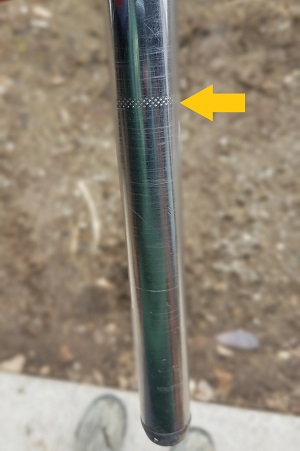
First, clear away debris from the area you’d like to collect a sample from. Then, push your soil test probe into the soil, give it a twist, and pull it back up. Finally, knock that soil out into your bucket using a stick, and move onto the next spot. Once you’ve done this five times for that plot site, you have your full soil sample for that location.
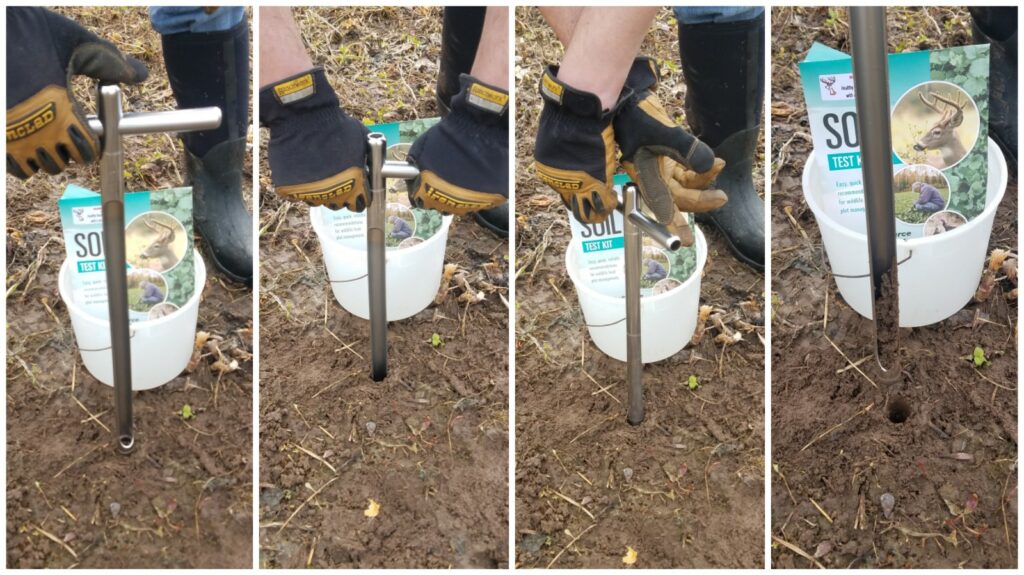
Don’t have a soil test probe? No worries, you can accomplish the same thing with a shovel. Ideally, we suggest doing this with something like a garden trowel, but you can make it work without. Basically, you just shovel out a small hole, then scrape the edge of the hole with the shovel. Then place a length of that sample into your bucket. Repeat four more times.
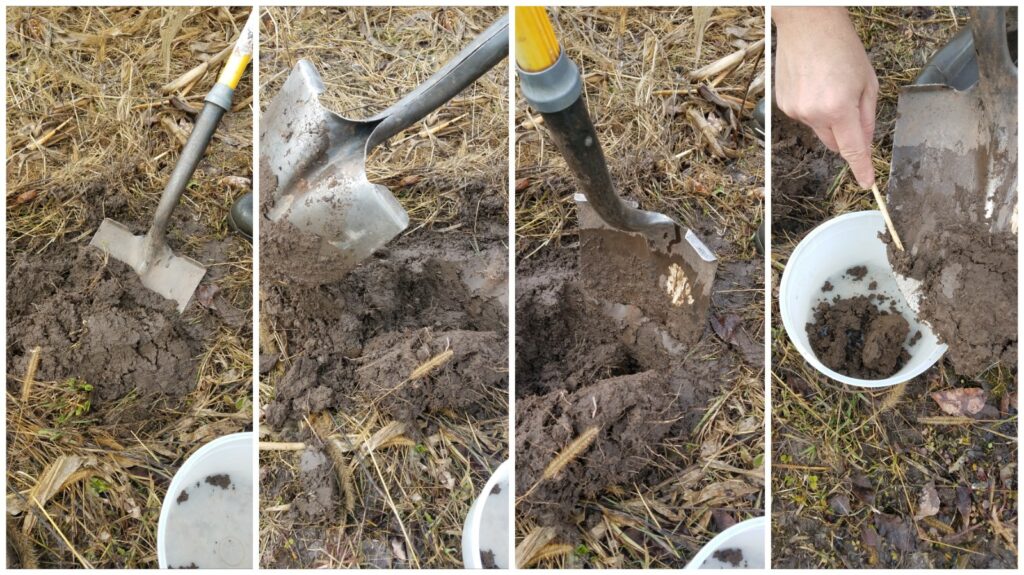
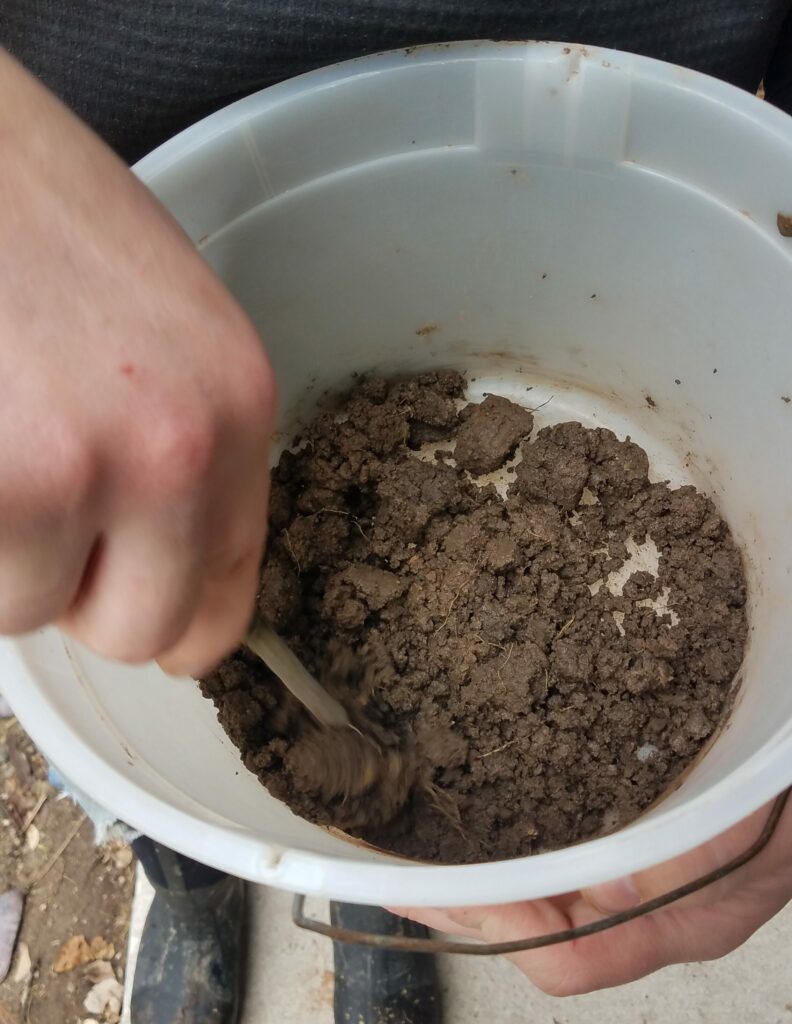
Once you have all your individual samples from one food plot in your bucket, go ahead and stir it all up. You will then take a portion of this entire sample and submit it for testing.
Essentially, what you’re submitting is an average for the entire plot site. Remember that this is just for one location; be sure to not combine individual samples from multiple sites. This could drastically skew your results.
Ok, so now you’re ready to send in your soil sample. Remember that test kit? When you open that up, you’ll find two sheets of paper, a bag to put the soil in, and an envelope to put the sample bag and paperwork in for mailing.
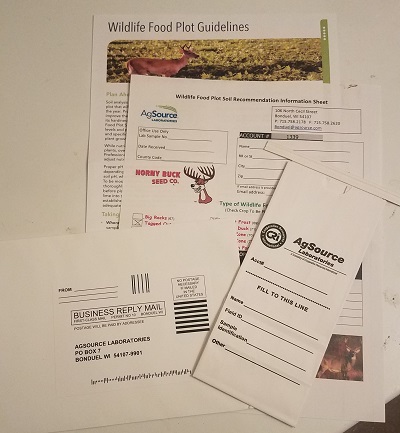
Now you’re going to need to fill some paperwork out. You’ll notice that some of the fields on the soil sample bag and the information sheet match up. For example:
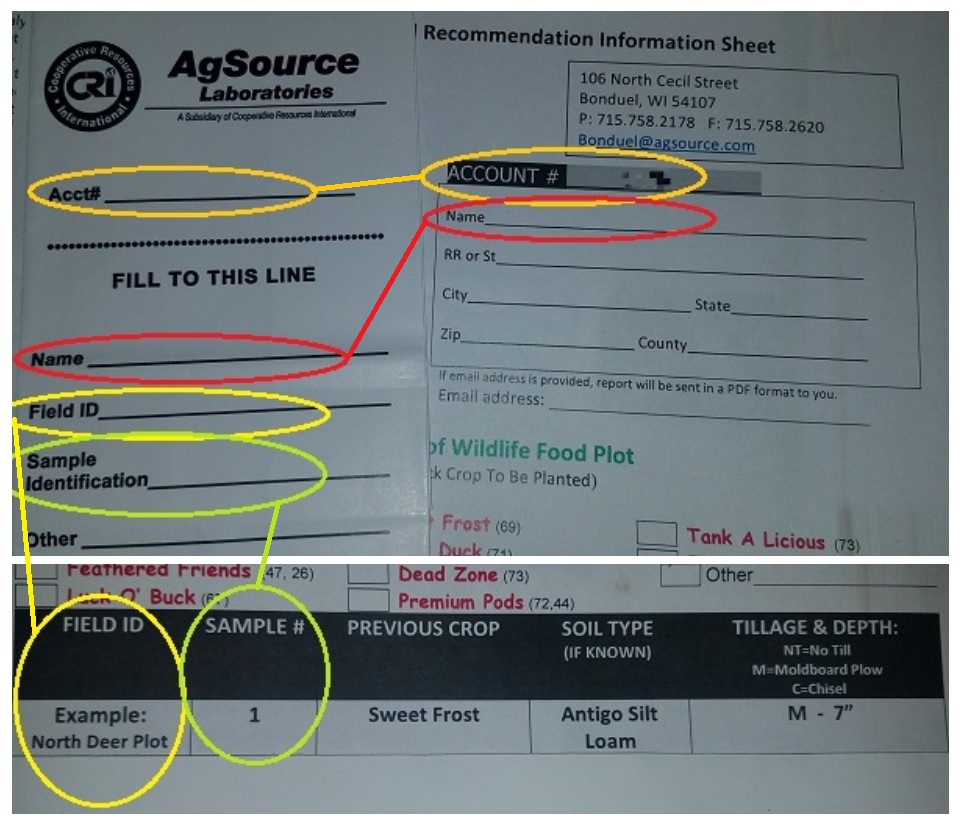
It’s pretty self explanatory. An account number will be listed on the form; write that number on the first line of the soil sample bag. Include your name. Be sure to come up with a name for the plot location (Bob’s plot, or Plot A, or whatever you want to call it). You’re sample ID will be 1 unless you had a 5+ acre plot that you divided into smaller sections.
You’ll also notice on the information sheet there’s a section to check off what you intend to plant in that plot next. If you know, great! Mark it off and you will get specific recommendations for that seed blend in your results. If you’re not sure, just check Big Racks.
For the sections “Previous Crop,” “Soil Type,” and “Tillage & Depth,” if you don’t know, it’s ok to leave them blank.
That’s it! Include your $18 cash or check in the envelope with the information sheet and soil sample bag, and drop it in the mail! You can expect your results soon!
We’ll explain how to read your results in an upcoming post. In the meantime, if you still have questions, leave us a comment on this post!
Got more specific questions? Join us April 26 at Stadium View in Green Bay for a night of food, drinks, prizes, and food plot knowledge. Reserve your spot here.
Hey, thanks for sticking around to the end! Use code HB10OFF for 10% off your next order. Happy shopping!
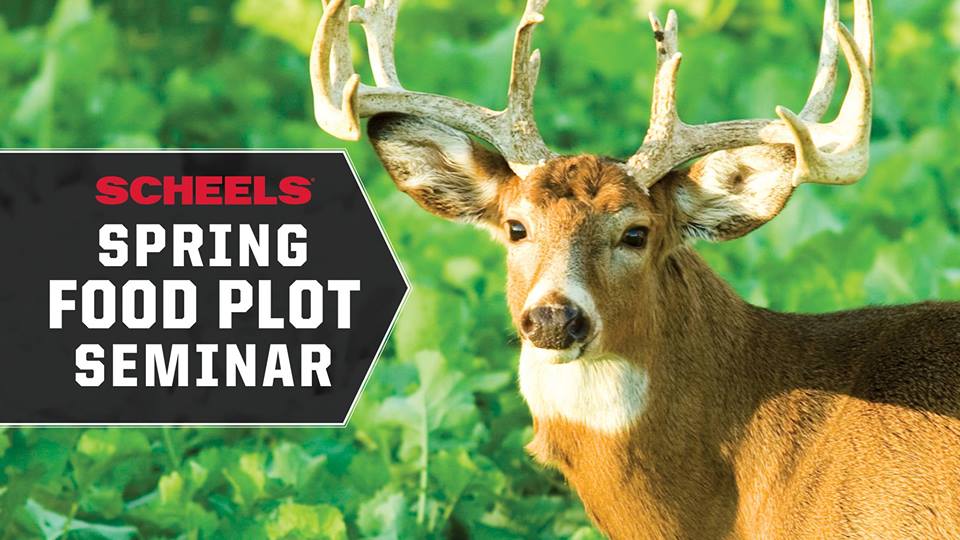
Be sure to mark Tuesday, March 26 from 6 – 7:30 pm on your calendars!
Doug will be speaking about all things food plots at Scheels in Appleton, WI. Cost is $10, and registration is required. Visit Scheels Customer Service to get signed up.
All registered attendees will get a $10 Scheels gift card and are eligible to win other prizes, including seed and mineral!
Address: Scheels
4301 W Wisconsin Ave
Appleton, WI 54913
See you there!
